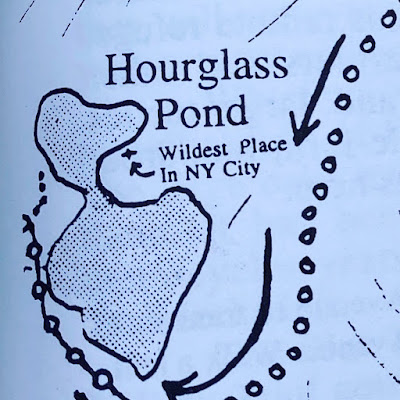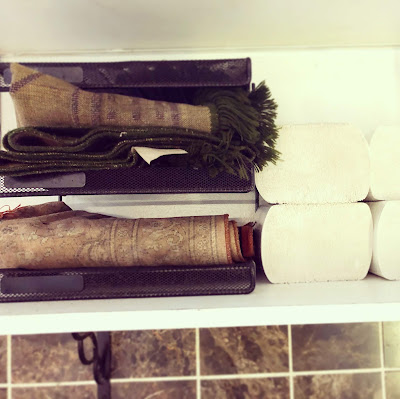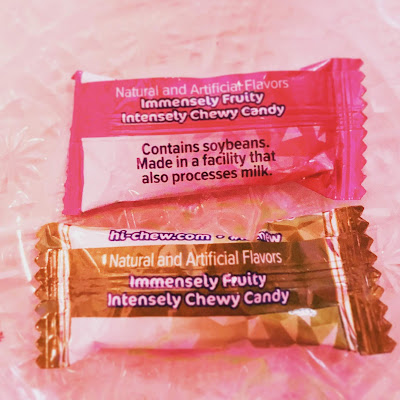It's true that at Luxury Escapism, a new multisensory spa in DUMBO, you'll find waffle-weave robes, dim lights, and a decanter of cucumber water.
But in place of lavender eye masks, you'll find electronic goggles called "eye massagers." In place of massage tables draped with towels, you'll find vibrating beds with gravity blankets. In place of almonds, you'll find Hi-Chew "intensely chewy candy." In place of new age music, you'll find a "sonic sauna." And in place of flickering candles, you'll find strobe lights and virtual reality goggles that transport you into geometric projections of infinity.
"I feel like I'm in a cross between West Elm and the Sharper Image," my companion whispered as we padded around the basement space in our courtesy slippers and robes. The pink light notwithstanding, the room—divided into eleven experiential zones—had that familiar millennial immersive-experience vibe: all tactile surfaces and activity stations and, arrayed on every surface, VR goggles. Here was self-care with a thrumming bass line of tech. It goes without saying that the entrance to Luxury Escapism is through an unmarked basement door.

However, even though the spa advertises its Instagram handle on its postcards, the posing-and-posting impulse is held in check by two ground rules: no phones and no talking above a whisper. (I got a press pass.) Instead, the spa promises to connect you with the present moment through "technology that actually feels good." If you're expecting a facial and a hot-stone massage, you've come to the wrong place—though there are faux hot stones set around an electric campfire.
On the night I visited, the ten or so other spa-goers were mostly young couples who seemed thrilled by a novel New York City date night. And while it is true that (as far as I know) there is no other place in New York City quite like this, our expectation of novelty—foundational to the immersive and pop-up experiences that abound these days—is becoming increasingly familiar.
Goggles of many sorts abound at Luxury Escapism. I decided to begin in the Yogibo Lounge, where I picked up my first pair: an electronic eye-massaging mask. It felt sort of like a blood pressure cuff inflating and deflating over my eyeballs while emitting wheezy puffs. A set of VR goggles catapulted me into a 3-D jungle; thankfully, the comfortable Yogibo beanbag kept me grounded. Soon an attendant beckoned me to "Rainbow Therapy," one of the spa's two timed experiences.
I lay down on a water bed and closed my eyes. The room darkened and the bed began to convulse. Strobe lights pulsed through my eyelids. Though I could control the intensity and vibrations, I felt a panic attack coming on. To stay sane, I silently chanted the mantra, "I am healthy and fit. Probably I will not have a stroke."
Next, I ducked into what would be my favorite experience, the Kinetic Sand Dome, a yurt with kinetic (moldable) sand, scoops, and slicers. The tactile experience was heightened by—goggles! But these were a non-VR pair with a lens that somehow separated my hands from my body. As my friend put it, "I feel like I'm watching an instructional video of myself in real time."
The next stop was called Lux TV: a couch in front of a TV showing grainy footage of ASMR installations, and a table of fidgets to calm your hands.
As my friend and I were playing in the Sound Stones playpen—a gravel-floored space outfitted with simple, childlike musical instruments and a headset you could use to manipulate the sounds—we were called into the Sonic Spa, the second timed experience. After the door closed on the small, windowless room, we plunged into total darkness alongside several strangers: panic attack #2. But then the soundscape began—a melange of birdsong, sticks breaking, snow crunching, cicadas. The darkness ended up being a welcome break from the audiovisual input.
VR goggles had greeted me at nearly every turn, from the Fuzzidarium, a room swathed in white fur; to a pair of hammock chairs; to the vibrating beds of the Senscape, where I took a float down a virtual stream; to the Cosmic Steam Room, where, using hand gestures paired with goggles, you could manipulate images projected on a scrim.
As the two hours were nearly up, I decided to cleanse my sensory palate with a Hi-Chew, one of those candies that is simultaneously stressful (it's claustrophobic! it fills the mouth entirely and sticks the teeth together! it seems it will never be swallowed!) and satisfying (the burst of fruit flavor! the teeth-sinking texture! the intensity!). For the forty-five seconds it takes to consume one, you can think of little else: it forces you into the present moment.
So it was for me at Luxury Escapism. Then I swallowed a paper cup of cucumber-infused water and the candy was gone.



























































